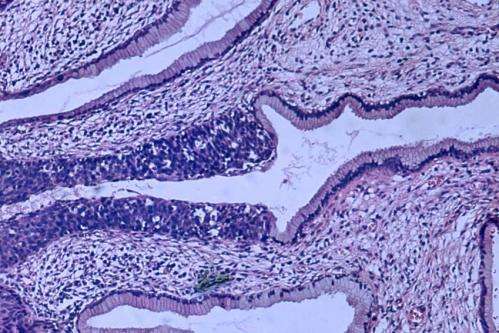

Scaling up cervical cancer screening coverage in the U.S. to 90% could expedite elimination of the disease and avert more than 1,000 additional cases per year, according to a new study led by researchers from Harvard T.H. Chan School of Public Health. Their modeling study found that this would be the most effective way to speed up elimination, compared to current levels of screening and human papillomavirus (HPV) vaccination.
“Although HPV vaccination will be a major contributor to reducing cervical cancer over time, we found that in the immediate term, screening continues to play a critical role in reducing the burden of cervical cancer in U.S.,” said Emily Burger, a research scientist in the Center for Health Decision Science at Harvard Chan School who co-led the study.
The study will be published online in The Lancet Public Health on February 10.
In 2018, the World Health Organization (WHO) issued a global call to eliminate cervical cancer as a public health problem, setting a disease target of four or fewer cases per 100,000 women. With vaccination against HPV, the virus known to cause cervical cancer, and early detection through screening, cervical cancer is one of the most preventable and treatable forms of cancer.
In the U.S., the HPV vaccine is recommended routinely for both girls and boys ages 11-12 years and up to age 26 years for catch-up vaccination. For the study, using current vaccine coverage rates and trends, the researchers estimated that 75% of girls would be vaccinated by age 26 and 62% of boys would be vaccinated by age 21.
Cervical cancer screening using Pap testing is recommended every three years for women ages 21-65 years, yet there is a large proportion of women who do not adhere to guidelines, either screening too much or too little; an estimated 14% of women are never screened.
This study is the first known comparative modeling analysis to project a timeframe for cervical cancer elimination in the U.S. The researchers used two independent disease modeling platforms (one from Harvard Chan School and one from Cancer Council New South Wales, Australia) to compare nine different HPV vaccination and cervical cancer screening interventions with a “status quo” scenario reflecting current screening and vaccination practices. They evaluated the potential for each scenario to achieve a threshold for cervical cancer elimination of four cases per 100,000 women, as well as a more ambitious threshold of one case per 100,000 women, over time.
They found that under the status quo scenario, cervical cancer elimination could be achieved by the years 2038-2046. Scaling up screening coverage to 90% expedited the timing of elimination by 10-13 years and averted an average of 1,400-2,088 additional cases per year. Increasing HPV vaccination coverage to 90% of girls and vaccinating adults of both sexes aged 26-45 years had almost no impact on elimination timing and minimal impacts on incidence.
This analysis is an extension of two studies published last week (see links below) evaluating the potential for and timing of cervical cancer elimination, as well as the mortality impacts of scaling up HPV vaccination, cervical cancer screening, and cancer treatment services in 78 low-income and lower-middle income countries. Those analyses, published in The Lancet, were co-led by three modeling groups comprising the WHO Cervical Cancer Elimination Modeling Consortium (CCEMC), which includes the authors of the current study.
“Across all three analyses, we were able to project the vast number of cervical cancer cases and deaths averted globally by ensuring high uptake of both prevention and treatment services for cervical cancer,” said co-lead author Megan Smith, program manager at the Cancer Council New South Wales in Australia.
Source: Read Full Article